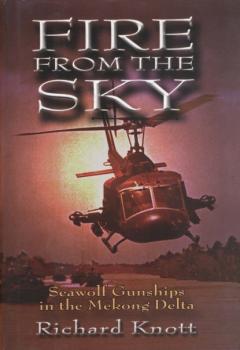ТОП просматриваемых книг сайта:
Richard C. Knott
Список книг автора Richard C. KnottАннотация
Thanks to the PBY's daring pilots and their effective tactics, the slow outdated Catalina patrol bombers became the scourge of Japanese shipping in the South Pacific during World War II. Painted black and hunting at night, the Black Cats, as they were called, are credited with sinking or disabling hundreds of thousands of tons of cargo vessels, troop transports, and warships. Curiously their exploits were known to few outside the naval aviation community until the publication of this book in 1981. This testimonial to their magnificent performance is told by an experienced flying boat pilot, who has pieced together the fascinating story from reminiscences of the men who flew the long, arduous missions and from official navy records. It is an inspiring tale of fearless men in machines ill-designed for combat who wreaked havoc on a dangerous and merciless adversary. Illustrated with more than sixty photographs and detailed line drawings, it is a book to be savored by those who like their adventure stories to ring true.
Аннотация
This is the dramatic history of the HAL-3 Seawolves, the U.S. Navy's first and only helicopter gunship squadron of the Vietnam War. The squadron was established «in country» to support the fast, pugnacious river patrol boats of the brown water navy. Flying combat-worn Hueys borrowed from the Army, the mission of the Seawolves quickly expanded to include rapid response air support to any friendly force in the Delta needing immediate, no-holds-barred assistance. Operating in two-plane detachments from specifically configured LSTs, hastily constructed bases, and primitive campsites, the navy gunships and their crews responded to calls within minutes. Flying in all kinds of weather, day and night, they arrived at tree-top level with forward-firing rockets and flex-guns blazing. Door gunners hung outside the violently maneuvering helicopters delivering a hail of fire with their hand-held M-60 machine guns. The Seawolves inserted SEALs deep into enemy territory, and extracted them, often despite savage enemy opposition. They rescued friendly combatants from almost certain capture or death, and evacuated the wounded when Medevac helicopters were not available.Gleaned from historical documents and the colorful recollections of more than sixty Seawolf warriors, this is the first complete history of the most decorated Navy squadron of the Vietnam War. Naval aviator Richard Knott recounts the story of the Seawolves from the dawning of the concept to the moment the last squadron commander turned out the lights.


